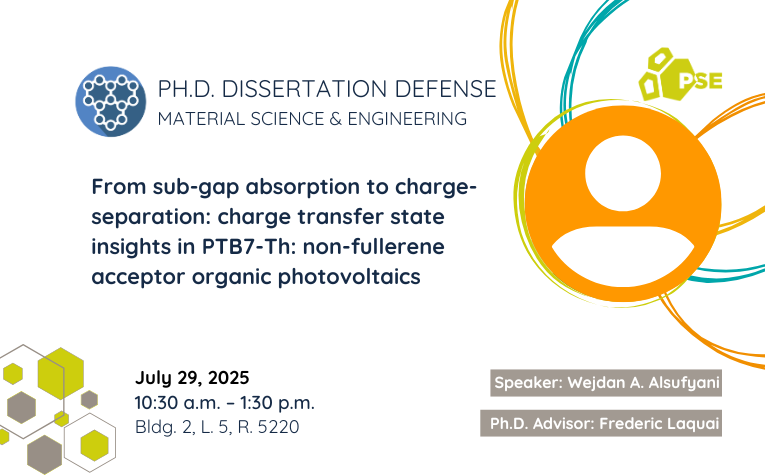Jul 2025

Abstract
Organic photovoltaic technologies, made from carbon-based semiconductors, have attracted significant attention due to their potential for light weight, flexibility, and cost-effective manufacturing. This study focuses on solar cells that combine a polymer donor (PTB7-Th) with a non-fullerene acceptor (IT-4F). By varying the mixing ratio between donor and acceptor, the research aims to clarify how different compositions affect the energies and intensities of key charge-transfer states, which are known to influence the overall efficiency and output voltage of these devices.
To address this question, the investigation employs sensitive optical and electrical techniques, including advanced spectroscopic measurements, to identify weak absorption features below the main absorption band. These sub-bandgap transitions are correlated with charge-transfer states at the interface of the donor and acceptor. The analysis reveals that as the proportion of the IT-4F acceptor increases, the number of interfacial sites for charge transfer decreases, leading to a reduced intensity of charge-transfer absorption and emission. Nonetheless, the energy of these interfacial states shifts slightly upward at higher acceptor content.
Further quantitative modeling based on Marcus theory shows an increase in the reorganization energy alongside this change in state energy. Although a higher charge-transfer energy could, in principle, raise the open-circuit voltage, the larger reorganization energy tends to counteract these gains by promoting additional non-radiative losses. Consequently, the overall voltage remains largely constant until donor dilution becomes extreme, at which point device performance drops.
This research highlights the nuanced balance between blend composition, interfacial charge-transfer energetics, and energy losses in organic solar cells. By correlating sub-bandgap absorption features with device operation, it offers design insights for optimizing blend ratios, ultimately supporting the development of more efficient, robust, and commercially viable organic solar technologies.